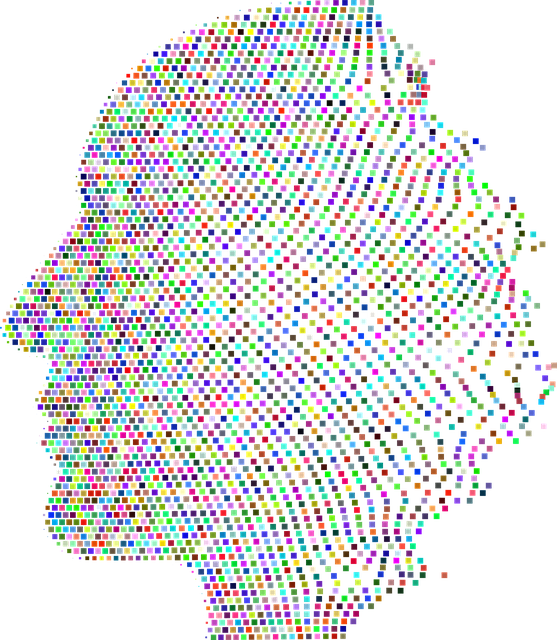Joint pain, a widespread issue impacting daily life and mental well-being, can be effectively managed through diverse therapies. Non-invasive options like stem cell and PRP treatments, physical therapy, anti-inflammatory medications, and chiropractic care target symptoms and underlying causes of arthritis and chronic inflammation. These holistic approaches, promoting natural healing, offer long-lasting relief and improved quality of life for individuals seeking joint pain management, acting as powerful tools in comprehensive pain alleviation.
Suffering from chronic joint pain? It can be a debilitating condition, affecting your mobility and quality of life. This article delves into the comprehensive approach of managing joint pain through integrated mindfulness practices and non-invasive therapies. We explore effective treatments like stem cell therapy, PRP injections, physical therapy, and natural anti-inflammatory approaches. Learn how these innovative solutions, combined with mindfulness, offer a holistic path to relief, revolutionizing arthritis management and restoring your active lifestyle.
- Understanding Joint Pain and Its Impact on Daily Life
- Exploring Non-Invasive Therapies for Effective Relief
- The Role of Stem Cell, PRP, and Physical Therapies in Managing Arthritis
- Natural Anti-Inflammatory Approaches and Their Benefits for Joint Health
Understanding Joint Pain and Its Impact on Daily Life

Joint pain is a prevalent condition that can significantly affect an individual’s daily routine and overall quality of life. It encompasses various conditions, including arthritis, injuries, and chronic inflammation, leading to discomfort, stiffness, and limited mobility. The impact on everyday activities can be profound, from simple tasks like getting dressed to more strenuous activities such as exercising or even walking. This pain not only causes physical discomfort but also has psychological implications, often resulting in stress, anxiety, and a reduced sense of well-being.
Thankfully, there are multiple therapies that offer joint pain relief and improve mobility. These include advanced treatments like stem cell therapy and PRP (Platelet-Rich Plasma) therapy, which harness the body’s natural healing mechanisms to regenerate damaged tissue. Physical therapy is another effective approach, focusing on exercises and techniques to strengthen muscles, improve flexibility, and reduce inflammation. Additionally, anti-inflammatory medications and chiropractic care can provide significant joint relief, addressing both the symptoms and underlying causes of pain.
Exploring Non-Invasive Therapies for Effective Relief

In the quest for effective joint pain management, exploring non-invasive therapies offers a promising avenue for individuals seeking relief without surgical intervention. Among various options, stem cell therapy for joint pain has gained attention for its potential to regenerate damaged tissue and reduce inflammation. PRP (Platelet-Rich Plasma) therapy is another cutting-edge approach, utilizing the patient’s own blood to accelerate healing and promote natural repair processes. Physical therapy plays a pivotal role, providing tailored exercises to strengthen joints, improve mobility, and reduce pain without the need for medications.
Additionally, anti-inflammatory joint treatments have been extensively studied for their ability to suppress painful inflammation associated with conditions like arthritis. Regenerative medicine, encompassing various techniques including chiropractic care, offers gentle adjustments to alleviate joint strain and restore function. These non-invasive therapies provide a holistic approach to pain management, empowering individuals to take control of their well-being without relying solely on drugs or invasive procedures.
The Role of Stem Cell, PRP, and Physical Therapies in Managing Arthritis

Stem cell therapy, platelet-rich plasma (PRP) therapy, and physical therapy are emerging as powerful tools in the comprehensive management of arthritis and related joint pain. These innovative treatments offer a promising alternative to conventional medications and surgical interventions, focusing on the body’s natural healing processes.
Stem cells have been hailed as a game-changer in regenerative medicine for arthritis. They possess the remarkable ability to differentiate into various cell types, promoting tissue repair and reducing inflammation. Stem cell therapy can stimulate the growth of new, healthy joint tissue while also releasing anti-inflammatory factors. PRP therapy enhances this process by utilizing a patient’s own blood to accelerate healing and reduce pain. The high concentration of platelets in PRP releases growth factors that facilitate tissue regeneration and suppress inflammation. Physical therapy complements these regenerative treatments by improving joint mobility, strengthening surrounding muscles, and providing tailored exercises to prevent further damage. These therapies work synergistically to offer long-lasting joint pain relief, enhance overall function, and improve the quality of life for individuals suffering from arthritis.
Natural Anti-Inflammatory Approaches and Their Benefits for Joint Health

Natural Anti-Inflammatory Approaches and Their Benefits for Joint Health
In the quest for effective pain management, particularly for conditions like arthritis and other joint disorders, many individuals are turning to natural anti-inflammatory therapies. These alternative treatments offer a gentle yet powerful approach to alleviating pain and improving joint function. Among the popular choices, stem cell therapy for joint pain has gained attention for its regenerative capabilities, promoting the body’s natural healing process. Similarly, Platelet-Rich Plasma (PRP) therapy for joints utilizes the patient’s own blood to stimulate healing and reduce inflammation.
Physical therapy for joint pain is another effective method, focusing on exercises tailored to strengthen muscles surrounding the affected joints, improve flexibility, and enhance overall mobility. Chiropractic care for joint relief also enjoys a strong following, leveraging manipulation techniques to correct spinal alignment and alleviate pressure on nerves, thus reducing pain signals. These natural anti-inflammatory joint treatments not only provide pain relief but also aim to address the root causes, potentially offering long-lasting benefits for patients seeking alternative solutions beyond conventional medication.
In conclusion, managing joint pain involves a multi-faceted approach. By combining non-invasive therapies like stem cell and PRP therapy, physical therapy, and natural anti-inflammatory approaches, individuals can find effective relief and improve their overall quality of life. Integrating mindfulness practices into these treatments further enhances healing, offering a holistic solution for enduring joint pain. For those seeking alternative options, regenerative medicine and chiropractic care provide promising avenues for long-term joint health and comfort.
